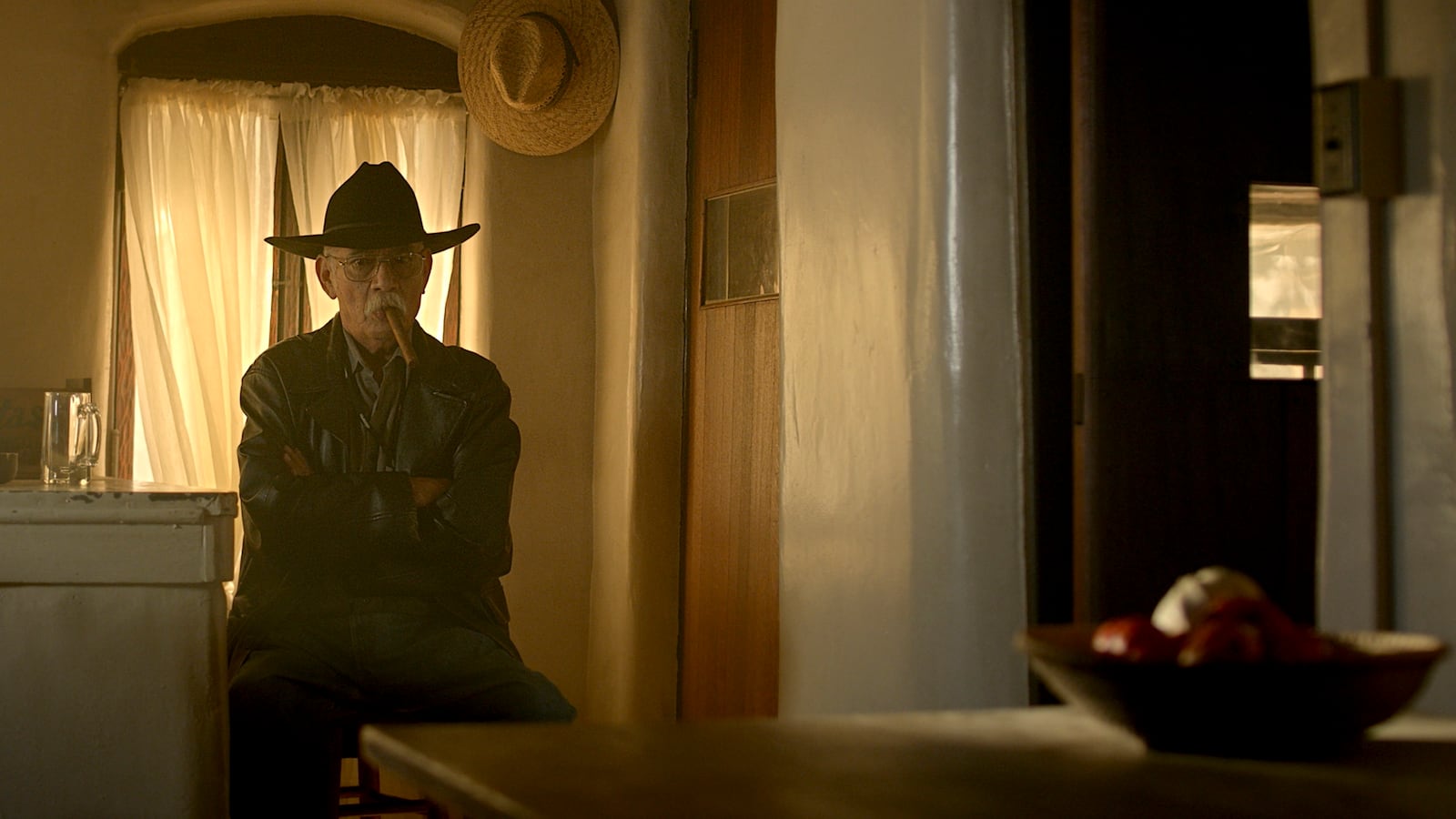Narcos: Mexico’s first two seasons revolve around the 1985 murder of undercover DEA agent Enrique “Kiki” Camarena, who was abducted, tortured and slain by the Guadalajara Cartel he was investigating. Mining thrilling drama from reality, the Netflix series is a true story about bravery and villainy that’s overflowing with larger-than-life figures, be it the bold Camarena, the ruthless cartel kingpins Miguel Ángel Félix Gallardo, Ernesto Fonseca Carrillo and Rafael Caro Quintero, or the resolute DEA agents intent on bringing to justice those responsible for their comrade’s killing—the latter group led by Walt Breslin, a take-no-prisoners American tasked with leading the retaliatory mission against the drug lords.
Unlike most of those featured in Netflix’s hit, Walt Breslin isn’t a real person but a composite character based largely on DEA agent Hector Berrellez, the supervisor of the inquiry into Camarena’s assassination. And in Amazon’s new The Last Narc, Berrellez tells his own harrowing tale of taking on Guadalajara’s kingpins—and in the process delivers revelations about the U.S. government’s own culpability in the death of one of their own.
Directed by Tiller Russell, The Last Narc is a four-part docuseries (premiering July 31) about the vast conspiracy that fatally ensnared Camarena. In a dim, empty bar illuminated only by light streaming through a background doorway and window, the candid Berrellez recounts his own involvement in the War on Drugs. Brought up by a tarot card-reading mom (here seen plying her supernatural trade), and compelled to pursue a law-enforcement career after his brother became hooked on heroin at age 12, Berrellez is a bearded, weathered cowboy with a glint in his eyes that says he means business. Forthrightly reminiscing about pulling guns on suspects—and shooting down one dealer during an undercover bust gone awry—he instantly comes across as the real deal, and thus a fascinating tour guide into this sordid cartel milieu.
Berrellez’s career took off once he joined the DEA, and he was soon ordered to figure out who had done in Camarena. According to wife Geneva “Mika” Camarena and colleagues Mike Holm and Phil Jordan, Camarena was a daring and driven agent determined to take down the mighty Guadalajara Cartel, and he certainly put a dent in their empire when he discovered (and, with the help of pilot Alfredo Zavala, photographed from the sky) Rancho Búfalo, a sprawling marijuana plantation that was subsequently torched by Mexican soldiers, thereby costing the cartel billions. On its own, that blow was enough to put Camarena in Gallardo, Quintero and Carrillo’s crosshairs. But worse still, it indicated that he was closing in on them, even though they had virtually everyone on their payroll, from local cops and politicians to Miguel de la Madrid, the then-current president of Mexico, as well as his predecessor, Jose Lopez Portillo.
On February 7, 1985, the cartel struck, seizing Camarena as he left the office to meet Mika for lunch. At 881 Lope de Vega—a residence owned by Ruben Zuno Arce, a dealer and associate of Quintero—Camarena was horribly tortured, and kept alive (so he could suffer more) by doctor Humberto Álvarez Machaín. After 36 hours, he fell into a coma and was lethally bludgeoned with a piece of rebar by one of Quintero’s gunmen. He was then buried in Arce’s La Primavera forest (a de facto cartel graveyard), only to later be dug up so he could be “found” by authorities.
Berrellez’s knowledge of cartel culture and operations is extensive and compelling, as is his explanation of the investigative hurdles he faced while trying to take down his targets. His insights alone make The Last Narc an eye-opening non-fiction account of underworld mayhem. Russell’s series, however, also benefits from the input of three cartel henchmen—Jalisco State Police officers Jorge Godoy and Rene Lopez, and their boss Ramon Lira—who relay their experiences as bodyguards for Gallardo, Quintero and Carrillo, as well as their direct participation in Camarena’s kidnapping and murder, all before they switched sides and became informants for Berrellez. From describing that broad-daylight snatching of Camarena, to revealing how Carrillo and Quintero argued about how to deal with their prisoner (the former wanted him released; the latter wanted him offed), their commentary affords a window onto a clandestine world fueled by greed, mercilessness, substance abuse and a sense of invulnerability.

DEA agent Hector Berrellez in The Last Narc
Courtesy of Amazon StudiosStunning first-person details abound in The Last Narc, provided by colorful characters led by Berrellez—a no-nonsense crime fighter who seems tailor-made for a big-screen action franchise, even in older age—and Godoy, who behaves in such a weird manner during his interview that it’s not clear if he’s drunk, mad, or some combination of the two. In a late scene, Godoy closes his eyes and brushes at his shoulders to dispel the spirits (of Camarena, and others) that haunt him. It’s a sight that’s all the more transfixing for being so weird, and it’s in keeping with the general gonzo nature of the proceedings, which (as in Narcos: Mexico) eventually implicate the CIA and DEA as complicit in Camarena’s execution. Led by Berrellez and others’ testimony, the series contends that Cuban-born CIA agent Felix Rodriguez partially conducted Camarena’s interrogation and torture, because the U.S. government feared that he had stumbled upon a much larger conspiracy—namely, that the CIA was in bed with the cartels, moving guns, drugs and cash through them in order to covertly fund Nicaragua’s anti-communist Contras.
That theory might not be new, but Berrellez’s discussion about his primary role in exposing the scheme—and the personal and professional ramifications he suffered as a result—lends it persuasive credence. The Last Narc thus transforms from a simple murder-mystery into a wide-ranging expose about the entangled relationship between the CIA, the Mexican government, the DFS (Mexico’s secret police, created by the CIA) and the cartels. In doing so, it renders Camarena a casualty of a war that was fundamentally unwinnable, since all interested parties had a stake in maintaining the status quo, regardless of the harm it caused the Mexican and American populations. Consequently, the lasting impression left by Russell’s series isn’t shock or outrage, but despair over a plague supported by a greedy many, and combated by a courageous few who, for their heroic efforts, received nothing but disgrace and death.


